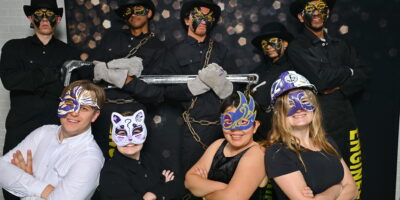It is an exciting time to be living: as technology, innovation and culture boom, we students can literally achieve our dreams. I am talking about one such opportunity of creating a museum exhibition that could parallel a seasoned curator with several years of experience. If you do not know what I am talking about, you have not only missed out on one of the best opportunities to witness such a development but also lost out on all the adventure it entailed. Here, let me quell the suspense at which point you will be gnashing you teeth for missing this occasion. Over the course of the past week, the 3rd year students at University of Waterloo’s Knowledge Integration program set up a full scale museum exhibit under the mast of the famed East Campus Hall facilities. The KI-X Museum project, unleashed after over a year of incubation, was such an exciting opportunity that only a select few around the world got to experience and I, for one, am very pleased to be right in the center of it .
Knowledge Integration (KI) is a new program-the first batch of students only graduate next year. It was started by Ed Jernigan, a systems design engineering professor. As part of the curriculum, the students in KI immersed themselves with the Amsterdam museum culture. Amsterdam has one of the highest exhibitions per capita in the world: Yes, it really does, despite being famed for other things. The museum exhibition is an 8 month project where for the first term we as a group come up with a theme, run a mock study, build posters and finally present a storyboard/overall visual design of our exhibit. For the next 4 months (my current term), we take our designs from the previous term, refine our ideas, run a larger study to test our assumptions, and from our results we alter our decisions. We finally then go build our exhibition and bring her to life. The exhibition ran from March 14 to 16th. </p>
Touring the exhibits, you would have learnt why robots may make you feel uncomfortable. Explore forms of peaceful protest and how you might get involved. Learned how limitations in mathematical tools led to the development of new ones. Understand the impact of a concussion, and learn about other neurological phenomena like dreams, or why some people see letters and numbers in colour. Finally, discover how archaeologists determine the purpose of an unknown object, and have a chance to try it out yourself. My exhibition, entitled ‘Guess What: Discovering objects through archaeology’, is a small scale version aimed to teach the skills required to figure out mystery objects through the use of touch. In the larger scheme of things, we wanted people to think about how their everyday objects would shed light several thousand years from now on us, our culture and our civilization .
The exhibition has been a tremendous success,with over 700 visitors experiencing the exhibition. Furthermore, several visitors expressed their awe of how students at this age were able to present such well thought out, curiosity-provoking designs and their implementation. For more information about the museum exhibition you can visit kix.uwaterloo.ca




Leave a Reply